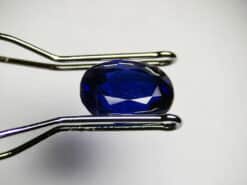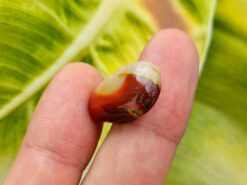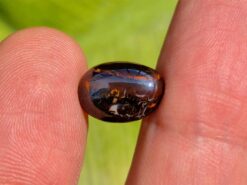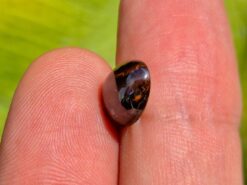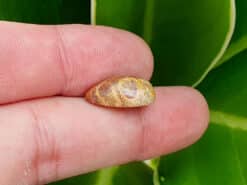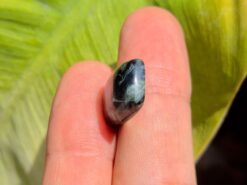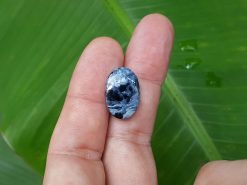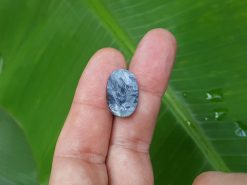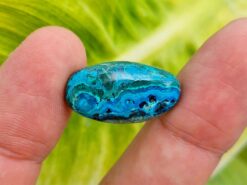Hemimorphite
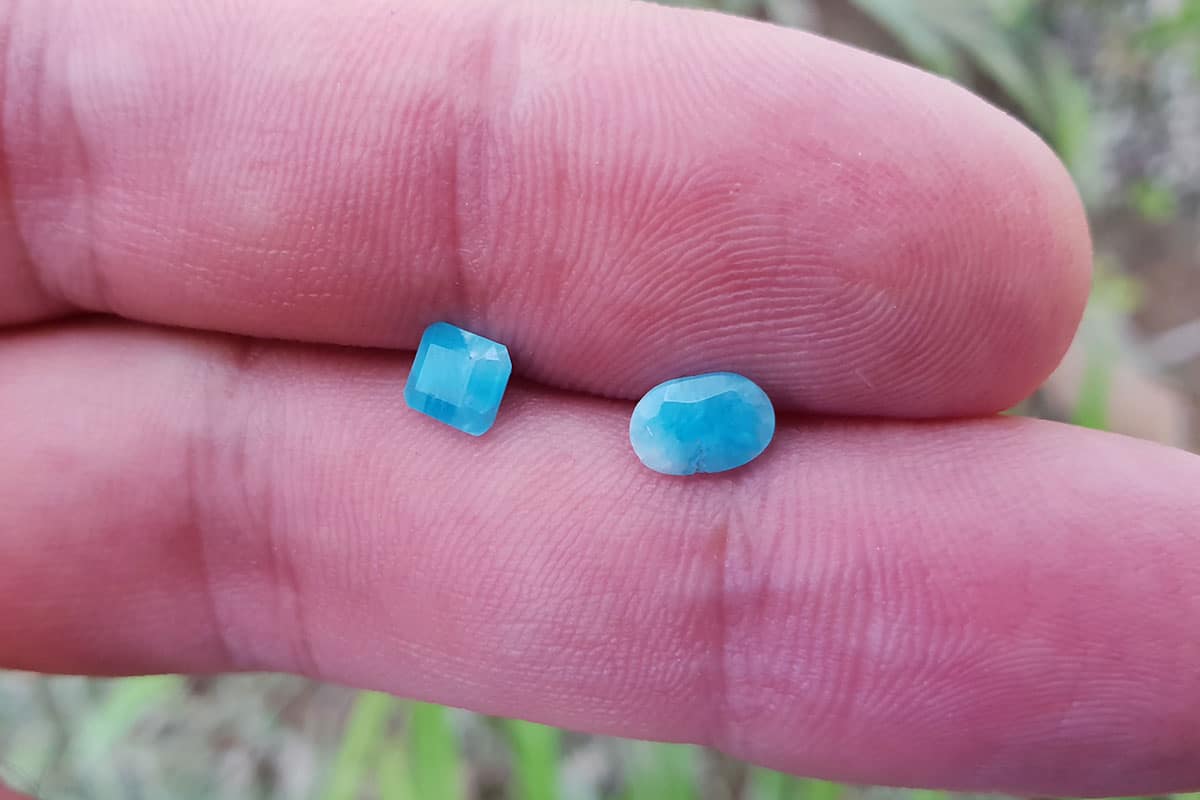
Hemimorphite, is Zn4(Si2O7)(OH)2·H2O, a component of calamine.
Buy natural gemstones in our shop
Hemimorphite stone
It is a sorosilicate mineral. It was historically found in the upper parts of zinc and lead ores, chiefly associated with smithsonite, ZnCO3. They were assumed to be the same mineral. And both were classed under the same name of calamine.
In the second half of the 18th century, we discovered that these two different minerals were both present in calamine. They closely resemble each other. The silicate was the rarer of the two. Its name hemimorphite, because of the hemimorph development of its crystals. This unusual form is typical of only a few minerals.
This means that the crystals have different terminations of faces. It most commonly forms crystalline crusts and layers, also massive, granular, rounded and reniform aggregates, concentrically striated, or finely needle-shaped, fibrous or stalactitic, and rarely fan-shaped clusters of crystals.
Some specimens show strong green fluorescence in shortwave ultraviolet light (253.7 nm) and also weak light pink fluorescence in longwave UV.
The stone most frequently occurs as the product of the oxidation of the upper parts of sphalerite bearing ore bodies, accompanied by other secondary minerals which form the so-called iron cap or gossan.
Hemimorphite is an important ore of zinc and contains up to 54.2% of the metal, together with silicon, oxygen and hydrogen. The crystals are blunt at one end and sharp at the other.
Hemimorphite properties
- Category: Sorosilicates
- Formula: Zn4Si2O7(OH)2·H2O
- Crystal system: Orthorhombic
- Crystal class: Pyramidal (mm2)
- Crystal class: Pyramidal (mm2)
- Color: White, blue, greenish
- Crystal habit: Polar crystals, with different or hemimorphic ends. Also coxcomb masses, mammillary, stalactitic, or massive
- Twinning: Rare on {001}
- Cleavage: Perfect on {110}, poor on {101}, {001} rare
- Fracture: Uneven to conchoidal
- Tenacity: Brittle
- Mohs scale hardness: 4.5-5
- Luster: Vitreous, adamantine, rarely silky
- Streak: White
- Diaphaneity: Transparent to translucent
- Specific gravity: 3.516 – 3.525
- Optical properties: Biaxial (+)
- Refractive index: nα = 1.614 nβ = 1.617 nγ = 1.636
- Birefringence: δ = 0.022
- 2V angle: Measured: 46°, calculated: 44°
- Solubility: Soluble in acid
Hemimorphite deposits
The deposits of the mines at the Belgian-German border have a good reputation. There are hemimorphite of metasomatic origin. Especially in Vieille montain in Belgium and also Aachen in Germany. Other deposits are in Tarnowskie Góry area in Upper Silesia, Poland.
Near Phoenixville, Pennsylvania; the Missouri lead-zinc district; Elkhorn, Montana; Leadville, Colorado; and Organ Mountains, New Mexico in the United States. And also in several localities in North Africa.
Further hemimorphite occurrences are the Padaeng deposit near Mae Sod in western Thailand; furthermore in Sardinia. Nerchinsk, Siberia. another in Cave del Predil, Italy. Bleiberg, Carinthia, Austria. And finally in Matlock, Derbyshire, England.
Blue hemimorphite crystal meaning and healing metaphysical properties benefits
The following section is pseudo scientific and based on cultural beliefs.
Blue hemimorphite has a vibration that increases the amount of light coming into your auric field, to aid ascension and spiritual growth. The vibration of this stone brings you an increase in joy, with the flow on effect helping your emotional state to improve.
The stone activates and aligns the upper four chakras and is a crystal known to heal the emotional body, enhance one’s communication abilities, and assist in cleansing and balancing one’s aura. This stone brings positive vibrations full of joy, happiness, and uplifting energy.
This stone gently relieves angst. The crystal is linked to self expression and communication. It is linked primarily to the throat chakra and as a result it stimulates an openness, and willingness to share who we really are.
FAQ
What is hemimorphite uses?
Practitioners advocate the stone as a stone for detaching from self-ego and bringing about spiritual growth. In the physical realm, The crystal is thought to be able to alleviate hormonal headaches, lessen ulcer-related pain and promote weight loss.
Can you wash Hemimorphite?
The stone can be transluscent and the stains look like they are actually dark mineralization under the hemimorphite. If so to try and disolve it away will ruin your specimen. It looks fine the way it is and all colored (and “clear”) minerals have some variation. Other that a gentle wash I would leave it alone.


